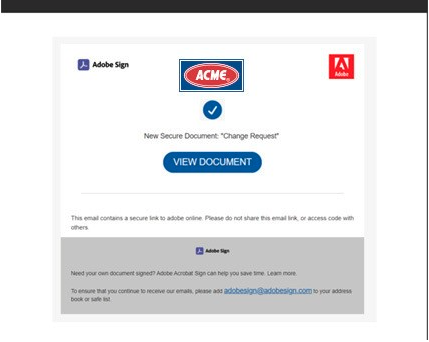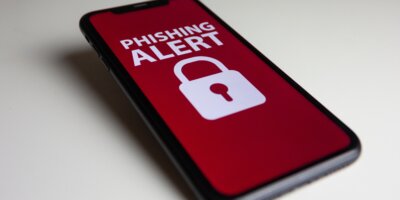
Barracuda reveals a surge in phishing attacks using Adobe InDesign. (Source – Shutterstock).
Adobe products continuously targeted for phishing attacks
- Adobe InDesign is now a vital tool in sophisticated phishing attacks evading security.
- Rising Adobe-related phishing scams underscore the urgent need for enhanced email security and training.
- Barracuda’s study exposes a spike in phishing attacks, revealing various tactics from general to targeted.
The digital landscape has witnessed a dramatic evolution in phishing attacks, transforming from rudimentary scams to highly sophisticated and targeted operations. Once a blunt tool wielded by cybercriminals, phishing has now morphed into a refined technique, using advanced technology and psychological manipulation to deceive victims. This escalation in complexity and cunning is a testament to the adaptive nature of cyberthreats in an ever-evolving digital world.
A recent report by Barracuda, a cloud-first security solutions provider, reveals there has been an alarming surge in phishing attacks utilizing Adobe InDesign, a popular document publishing system. Barracuda’s study sheds light on a 30-fold increase in emails with InDesign links since October – a jump from around 75 to 2,000 emails per day. Notably, nearly 9% of these emails contain active phishing links, and around 20% feature removed content, indicating a new level of sophistication in these attacks.
Sophistication in modern phishing attacks
Phishing strategies have become more nuanced, employing diverse tactics to evade security measures and trap unsuspecting users. Attackers are increasingly exploiting Adobe InDesign for its ability to bypass detection easily. It allows them to use known or trusted domains that often escape blacklisting and to craft convincing social engineering attacks with a publishing program.
As observed by Barracuda researchers, most of these phishing links utilize the “.ru” top-level domain and are masked behind a Content Delivery Network (CDN). This CDN acts as a proxy, concealing the content’s source and complicating the task for security technologies to identify and thwart the attacks.
Barracuda’s findings reveal the diverse nature of phishing attacks, which range from broad, non-specific strategies to highly targeted ones. Many of these attacks employ OneDrive, SharePoint, and Adobe logos to gain users’ trust. In contrast, other attacks are meticulously crafted, targeting specific organizations or individual users, and feature legitimate brand logos to enhance their credibility. This variety in approach underscores the depth of effort attackers are willing to invest to make their phishing attempts convincing. Moreover, incorporating Adobe InDesign into these schemes exemplifies the sophisticated evolution of phishing tactics.

Featuring legitimate brand logos to enhance their credibility. (Source – Barracuda).
Attackers often use trusted domains, not typically on blocklists, making them seem more legitimate. By utilizing a publishing program, they create compelling social engineering attacks. A key tactic involves redirecting victims to a separate web page upon clicking a link, thereby avoiding the inclusion of a directly identifiable malicious URL in the email, which traditional security tools might detect and block.
Additionally, when these attacks are hosted behind a Content Delivery Network (CDN), it further obscures the malicious source, making it challenging for security technologies to detect and prevent these attacks.
Mark Lukie, director of solution architects at Barracuda Asia-Pacific, emphasizes the need for advanced, AI-powered email security solutions to combat emerging and known threats. Alongside technological defenses, Lukie advocates regular cybersecurity awareness training for employees, equipping them to recognize and respond appropriately to suspicious or malicious emails.
This two-pronged approach of sophisticated security measures and educated vigilance forms the frontline defense in the ongoing battle against the rising tide of phishing attacks.
Understanding the Adobe Cloud phishing scam
Phishing scams are a growing concern in the digital world, with cybercriminals constantly developing new ways to deceive users. One such sophisticated scam is the ‘Adobe Cloud’ phishing email, which is particularly insidious because it doesn’t just exploit Adobe InDesign.

An X user sending alerts on a potential phishing email. (Source – X).
This scam is designed to trick recipients into giving away personal information like login credentials and credit card details. The email, disguised as an official message from Adobe, known for its popular software products like Photoshop and Illustrator, often includes urgent claims about subscription expiry or unusual account activity to prompt immediate action from the recipient, such as clicking a link or downloading an attachment that leads to a fake Adobe login page or contains malicious software.
Scammers carefully craft these emails to replicate the look and feel of genuine Adobe communications, complete with convincing logos and email addresses. They use compelling subject lines to grab the recipient’s attention and create a sense of urgency or fear to prompt quick action. The desired action usually involves clicking a link or downloading an attachment, leading the victim to a counterfeit Adobe login page or downloading a harmful file.
Suppose the recipient falls for this trap and enters their credentials on the fake page. In that case, the scammer gains access to their Adobe account and can engage in various malicious activities, such as stealing personal information, spreading malware, or initiating more phishing attacks.
Victims of the Adobe Cloud phishing scam need to respond promptly to mitigate potential damage. The first step is to change their Adobe account password to something strong and unique and enable two-factor authentication for added security. They should also scan their device with reputable antivirus software to remove malware.
Monitoring financial and other online accounts for unusual activity is crucial, and any unauthorized transactions or changes should be reported immediately. Reporting the scam to Adobe and local authorities is vital for awareness and could help in legal action against the scammers.
Technical strategies employed in phishing scams
In executing this scam, scammers use several technical tactics to deceive recipients and evade detection. Email spoofing is a common method, where the email address is manipulated to look like it’s genuinely from Adobe, sometimes using domain names similar to Adobe’s official domain. The emails may include attachments embedded with malware or designed to exploit software vulnerabilities.
Scammers also create fake Adobe login pages that closely resemble the legitimate login portal, capturing the victim’s credentials. They often employ URL obfuscation techniques to make malicious links appear legitimate, redirecting the recipient to these fake login pages or malicious websites.
As the digital landscape continues to evolve, so do the methods of cybercriminals, with phishing attacks becoming increasingly sophisticated. The use of Adobe products, particularly InDesign, in these scams highlights a concerning trend in the cyber-world. It’s a reminder that in the digital age, vigilance and advanced cybersecurity strategies are essential to protect against the ever-changing tactics of online fraudsters. The fight against phishing attacks is ongoing, requiring both technological sophistication and informed caution among all internet users.
READ MORE
- Safer Automation: How Sophic and Firmus Succeeded in Malaysia with MDEC’s Support
- Privilege granted, not gained: Intelligent authorization for enhanced infrastructure productivity
- Low-Code produces the Proof-of-Possibilities
- New Wearables Enable Staff to Work Faster and Safer
- Experts weigh in on Oracle’s departure from adland




